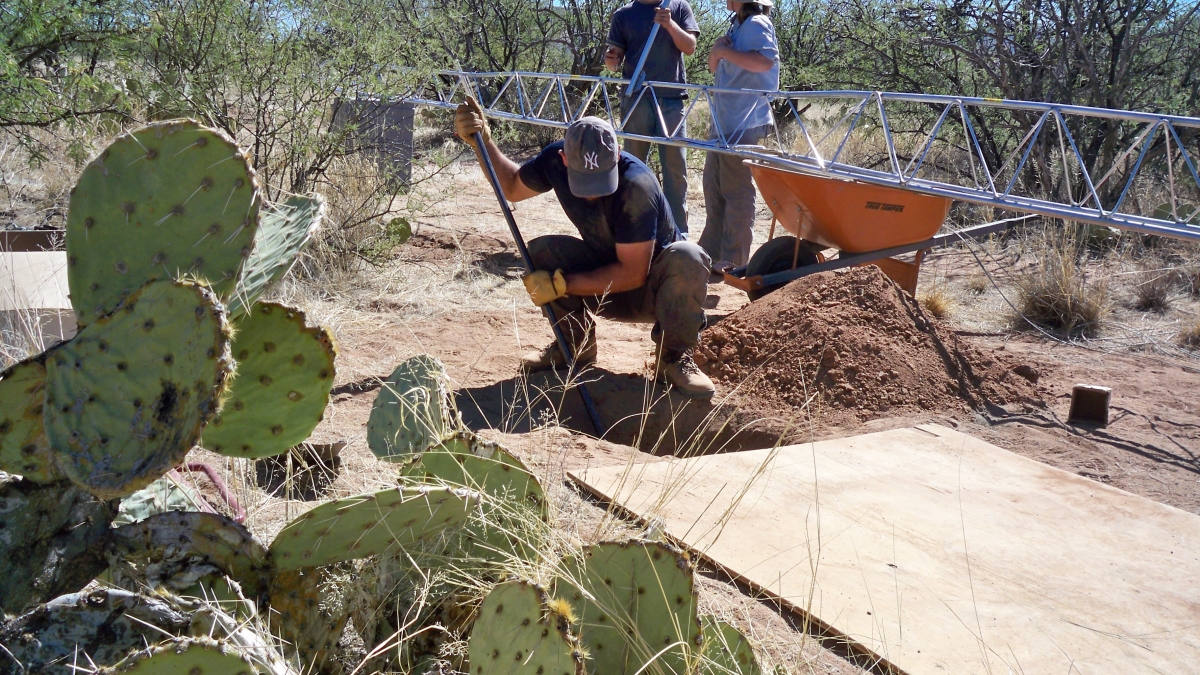Student's freshwater study garners AAAS top award

A water forum sponsored by the American Association for the Advancement of Science Southwestern and Rocky Mountain Division (AAAS SWARM) brought top water experts to Arizona State University to discuss and network with water resource professionals, students and the public around the looming challenges to freshwater supply and use in the West.
Among those presenting were ASU faculty Enrique Vivoni and John Sabo, along with graduate students from across the university, who attended a student poster session and competition.
“We share rivers, aquifers and rainfall,” noted Enrique Vivoni, a hydrologist with the School of Earth and Space Exploration in the College of Liberal Arts and Sciences and the School of Sustainability, Engineering and the Built Environment within the Ira A. Fulton Schools of Engineering. “Water resource sustainability requires more than technologically-capable graduates. It requires new teaching methods as well, to address these challenges in the West and along the Colorado River corridor.”
ASU student research impacts water management
Vivoni’s students set up environmental sensor networks in metro Phoenix and three sites around the U.S.-Mexico border. Their findings are used by water resource managers in the U.S. and Mexico to make better decisions about allocations, diversions and environmental impacts on fisheries and recreation.
“Even in areas that seem protected from scarcity, like the East Coast of the U.S., studies by our students have found there are often acute water shortages at a fine level, rather than regional level, particularly around cities,” pointed out John Sabo, a professor in the School of Life Sciences and director of research development for the Global Institute of Sustainability.
Thomas Volo, a doctoral student with Vivoni, is one of those whose research in hydrology is making a difference at the municipal level. His study, "Modeling Insights to Scheduling Landscape Irrigation in a Desert City," examines the outdoor water usage on two different types of landscapes – xeric, with desert plants, and mesic, with turf grass and shade trees – in an attempt to determine true irrigation requirements and conserve municipal water. Volo compares his research findings to "Water: Use it Wisely," a statewide partnership between various cities and organizations in Arizona that provides a landscape watering guide.
His study found that while municipal guidelines recommended water usage of eight meters a year, amounts for landscapes could be potentially trimmed to a mere 2-3 meters a year. “Municipal recommendations are set for 'safe' measures. But if you know your soil and your plants, you can tailor a more efficient schedule,” explained Volo.
AAAS water forum award
Capturing the the forum’s poster judges’ attention and votes, Volo won an all-expenses-paid trip to Chicago to present his work at the national American Association for the Advancement of Science (AAAS) meeting in 2014.
"Thomas touched on an issue – irrigation – that most people can see when driving through Arizona neighborhoods and rural areas," said Sarah Muench, a poster-contest judge and interactive marketing and communications manager for the College of Liberal Arts and Sciences. "City governments, and even we as home landscapers, tend to think we know the right answers when it comes to watering our lawns – but he clearly showed that we could be saving even more water, and that's important for a sustainable future in our desert climate.
"Thomas was also articulate and sparked my interest by speaking on a level that the public at-large could understand," Muench continued. "That ability is key for taking his project to the next level, and I have confidence he will succeed."
Volo believes that taking his AAAS presentation to Chicago will give his research a wider audience and enhance his own experience, which is already quite broad.
“After I got my undergraduate degree in music and accounting, I became involved in performance arts management, moving frequently and living in a series of large cities and small towns,” said Volo. “I spent a lot of time getting a feel for the different challenges, priorities and values in these different places. It’s why I pursued a degree in civil engineering; because it gave me the opportunity to work directly on problems and have greater impact.
“But it’s important to recognize it’s not all about crunching numbers," he says. "Bringing my liberal arts background to engineering gives me the ability to pass something along, so others recognize that the role of engineering is more than calculations, it’s also about communicating ideas.”
In addition to his AAAS water forum win in November, Volo also received the 2013 Central Arizona Project (CAP) Award for Water Research this summer. This award recognizes excellence in student research addressing water issues facing central and southern Arizona and the Colorado River.
Three other students also received cash awards for their posters, including doctoral student Tiantian Xiang, who is also with the Vivoni laboratory; Deborah Ayodele, a doctoral student with ASU’s School of Geographical Sciences and Urban Planning; and Anela Kneri, with the University of Arizona.
“The U.S. has an aging water infrastructure and water policies that need to be updated,” Volo said. “I want to teach and be one of a new crop of water thinkers leading the way in facing these challenges.”
To see water forum experts’ videos about water in the West, Mexico and along the Colorado River, go to the AAAS SWARM water forum website.